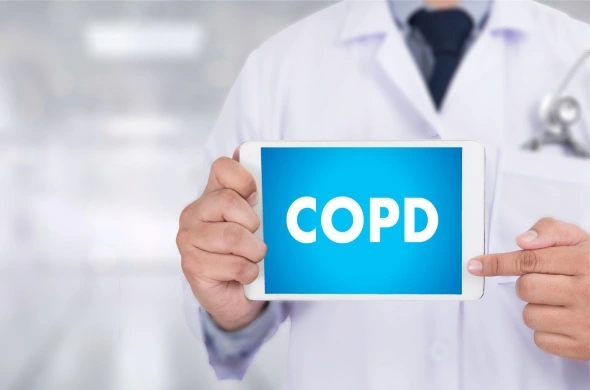Breathing is something most of us take for granted, until it becomes a struggle. For millions living with Chronic Obstructive Pulmonary Disease (COPD), each breath can feel like a conscious effort. But a diagnosis isn’t a life sentence to sit on the sidelines. With the right knowledge and tools, you can manage your symptoms and reclaim your vitality.
In this guide, we’ll break down COPD Explained in clear, understandable terms. We’ll explore what it is, what causes it, and most importantly, the practical steps you can take to breathe easier and live a fuller life.
What is COPD, Really?
At its core, COPD Explained simply is a chronic lung disease that makes it hard to move air in and out of your lungs. Think of your airways as a series of straws. In healthy lungs, these straws are wide open. With COPD, they become narrowed, clogged with mucus, and lose their elasticity, making it feel like you’re constantly trying to breathe through a tiny, clogged straw.
It’s primarily caused by long-term exposure to lung irritants, with cigarette smoke being the leading culprit. However, other factors like air pollution, chemical fumes, dust, and even a genetic condition called Alpha-1 Antitrypsin Deficiency can also play a role.
Recognizing the Signs: More Than Just a “Smoker’s Cough”
Early detection is key to slowing the progression of COPD. The symptoms often start subtly and are mistakenly dismissed as just part of aging or being out of shape. Look out for:
- A chronic cough that just won’t go away, often producing mucus.
- Shortness of breath, especially during physical activities you used to handle easily (like walking up a flight of stairs).
- Wheezing, a whistling or squeaky sound when you breathe.
- A feeling of tightness in your chest.
If this sounds familiar, don’t ignore it. Talking to your doctor and getting a simple breathing test called spirometry is the first step toward getting answers and a proper care plan.
Taking Control: Your COPD Management Toolkit
While there’s no cure for COPD, it is highly manageable. Effective treatment focuses on relieving symptoms, preventing exacerbations (flare-ups), and improving your overall quality of life.
1. Medical Support:
- Medications: Inhalers (bronchodilators and steroids) are the cornerstone. They work by relaxing the muscles around your airways (making the “straw” wider) and reducing inflammation.
- Pulmonary Rehabilitation: This is a game-changer. It’s a supervised program that combines exercise training, nutritional advice, and education to strengthen your lungs and body.
- Oxygen Therapy: If your blood oxygen levels are low, supplemental oxygen can help you stay active and feel better.
2. Lifestyle Empowerment:
- Quit Smoking: It’s the single most important thing you can do. It’s never too late to stop, and your lung function can improve.
- Stay Active: It might seem counterintuitive when you feel short of breath, but regular, gentle exercise strengthens the muscles that help you breathe. (Always consult your doctor on what’s safe for you).
- Eat Well & Stay Hydrated: A balanced diet fuels your body and makes breathing easier. Drinking water helps thin mucus, making it less sticky and easier to clear.
- Avoid Irritants: Pay attention to air quality reports, avoid secondhand smoke, and wear a mask if you’re around dust or fumes.
A Special Note on Exercising While Sick:
When you have COPD, protecting your lungs is paramount. This brings us to a crucial point: Exercising While Sick. The general rule is to listen to your body carefully. If your symptoms are “above the neck” (like a mild runny nose), light activity may be okay. However, with COPD, any respiratory illness—even a common cold—can quickly become serious. If you have a fever, chest congestion, a worsening cough, or increased shortness of breath, it is essential to rest and contact your doctor. Pushing yourself can lead to a dangerous exacerbation. Always err on the side of caution.
The Emotional Journey: You’re Not Alone
Living with a chronic condition can be isolating and anxiety-inducing. It’s normal to feel frustrated or scared. Seeking support from therapists, joining a COPD support group, or simply talking openly with family and friends can make a world of difference. Managing stress through techniques like paced breathing or meditation is also vital for your overall well-being.
The Bottom Line
Getting a COPD Explained diagnosis can be overwhelming, but it’s the beginning of taking back control. By partnering with your healthcare team, making key lifestyle changes, and learning to listen to your body, you can manage your symptoms, reduce flare-ups, and continue to enjoy a active, fulfilling life. Every step you take towards better lung health is a victory.
Disclaimer: This information is for educational purposes only and is not a substitute for professional medical advice, diagnosis, or treatment. Always seek the advice of your physician or other qualified health provider with any questions you may have regarding a medical condition.
